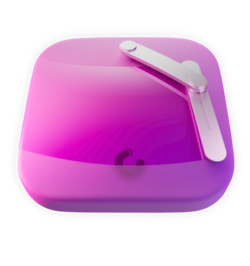How to clear iPhone storage
Apple has made a big leap with iPhone cameras, making professional quality photos available to everyone. But this perk comes at a price, and this is storage space. High-resolution media take up a lot of space, and although you can store them in your iCloud storage, it has its limitations.
In this article, we’ve shared some tips to help you clear storage on your iPhone and make your device completely clutter-free.
Why is my iPhone storage full?
Your iPhone may be full of things you don’t really need. Since they take up a lot of valuable space, it’s important to find out what they actually are. Here’s how to check and manage storage on your iPhone:
Go to Settings > General > iPhone Storage.

- At the top, you’ll see a color-coded bar showing how much space you have left, how much is taken up, and what's taking it up. The biggest categories are usually Photos and Apps, but that depends on your usage.
- Below there is a list of your apps sorted by how much space they take. You can tap each app to see how much of that space is the app itself, and how much of it is the app’s Documents and Data.
Depending on how you use your iPhone, you might have a huge and bloated Photos app, bursting with photos and videos. Or it might be games and social media apps that are hoarding the most storage. Below are six easy steps you can follow to free up storage on iPhone regardless of your iPhone use.
How to clear storage on iPhone
Chances are, there’s a lot of unneeded clutter on your iPhone. And that’s actually good news. It means you can free up a significant chunk of space without deleting the things you want to keep. Here’s how to clear storage on iPhone, step by step.
Step 1. Clean up your photo library
If you’ve checked iPhone storage like we suggested above, you already know who the main space hogger is (looking at you, Photos). Of course, wiping your whole photo library clean is not an option, but there’s probably stuff you can get rid of:
- Duplicate photos, like those you downloaded twice
- Similar shots (like the five selfies you took so you can pick a good one)
- Screenshots you don’t need anymore
You can go through your library and weed out these photos and images manually, but a quicker and more convenient alternative is an iPhone app like CleanMy®Phone — a careful cleaner for iPhone.
Here’s how to free up storage on iPhone with it:
- Download CleanMy®Phone and open it. Allow it to access all photos — worry not, all files are scanned on device, meaning that they are not uploaded to the developer’s servers for analysis.
- Now, check out the Declutter module — it detects all unneeded images in no time — and tap Scan.
- When the scan is complete, you’ll see the following categories: Screenshots, Duplicates, Blur, App Folders, Screen Recordings, and TikTok videos. This is where you’ll see screenshots, indistinct images, and other useless stuff.
- Open each category. All photos will be preselected for deletion, but you can deselect the ones you still need. Once you’re done with one category, tap the Close button and repeat the process for the remaining categories.
- Once you’ve checked all preselected photos, tap Clean > Delete.

CleanMy®Phone also helps organize similar photos with its smart Organize module. Sets of similar photos will be grouped into the following categories: Travel, Food, Pets, Portraits, and Text. Within each category, you’ll see photos grouped into Similars and Unique. Not-so-excellent photos in Similars are already preselected for removal, but you can deselect them. Once you’re ready to say goodbye to unneeded photos, tap Clean.
After a cleanup like this, your library will shrink by a few gigabytes and become way easier to navigate.
Step 2. Clear browser cache
If you often use your iPhone to browse the web in Safari or Chrome, keep in mind that your phone may be storing caches and other data that you don’t need. And you'd be surprised how much space you can free up just by clearing your browser cache.
Here’s how to clear Safari cache:
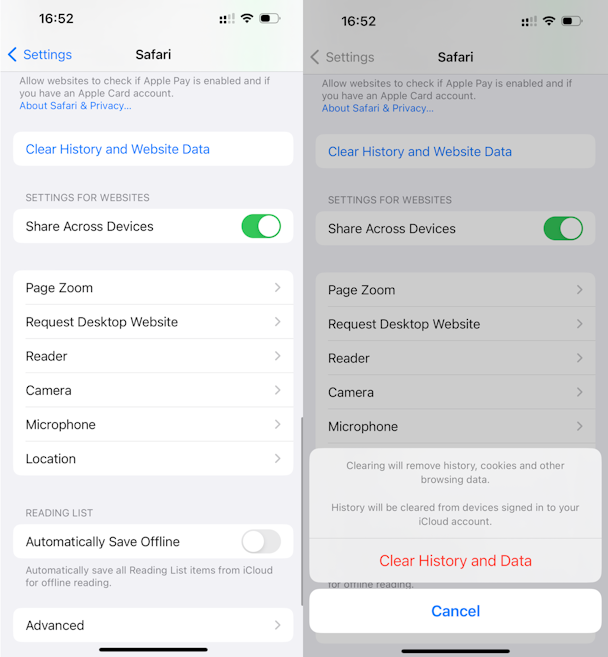
- Go to Settings.
- Find Safari.
- Choose Clear History and Website Data.
If you use Chrome, follow these steps to clear its cache:
- Open Google Chrome on your iPhone.
- Tap Options > Settings.
- Scroll down and tap Privacy and security.
- Tap Clear Browsing Data.
- Select which data you want to clear and tap Clear Browsing Data.
Step 3. Clear app cache and other app data
Unlike browsers, most apps don’t give you access to their cache and other data they store, such as login data. And if you tap on each app at the top of that list in iPhone Storage, you’ll notice it has several gigabytes of so-called Documents and Data. Here’s how you clear that app data to get more iPhone storage:
- Before you start, make sure you remember your logins to various apps or have them saved somewhere.
- In Settings > General > iPhone Storage, tap an app at the top of the list. This will often be a social media app like Facebook or Snapchat, a messenger, or a content app like YouTube or Spotify.
- Tap Delete App.
- Go to the App Store and reinstall the app.
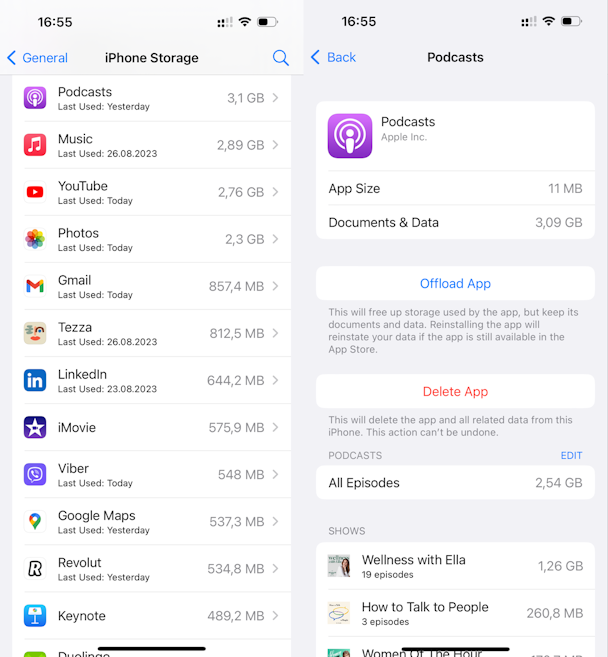
Yup, unfortunately, this is the only way to clear cache and other app data for the majority of apps.
Step 4. Delete attachments in Messages
Texting isn’t just about text, right? You’re sending and receiving memes, GIFs, selfies, little videos of your cat falling off the couch in her sleep. All that content is stored on your iPhone even if you don’t save it to Photos, and if you text a lot it quickly adds up.
Here’s how to delete all your attachments in Messages to clear some iPhone memory:
- Go to Settings > General > iPhone Storage.
- Scroll down and tap Messages.
- You’ll see a list: Top Conversations, Photos, GIFs and Stickers, and Other. Tap on the category that occupies the most space. Keep in mind that in Top Conversations, you’ll be deleting entire threads, not just the attachments. If you don’t want to do that, stick to Photos and other content.
- Tap Edit in the upper-right corner.
- Mark all attachments you want to delete.
- Tap the Trash icon.

That’s it! Space-hogging attachments are gone.
Step 5. Delete offline content
You probably consume a lot of content every day — music, videos, podcasts and what not. And if you save that content offline to be able to play it on the subway or during a long flight, you have quite a lot of leftovers piled up.
As a result, apps like YouTube, Netflix, and Spotify can take up several gigabytes of iPhone storage each. So why waste space on those Stranger Things episodes you downloaded back in 2017 and a long-forgotten playlist you never listen to anymore?
Let’s start with Netflix. Here’s how to delete Netflix movies and series you saved onto your iPhone:
- Open the Netflix app.
- Go to Downloads.
- Tap on the pencil icon in the top right corner.
- Tap on the red X to delete the video.
Next up, YouTube. To delete offline YouTube videos, follow these steps:
- Launch the YouTube app.
- Go to Library > Downloads.
- Tap the three dots next to a downloaded video.
- Tap “Delete from downloads.”
- Repeat for each video.
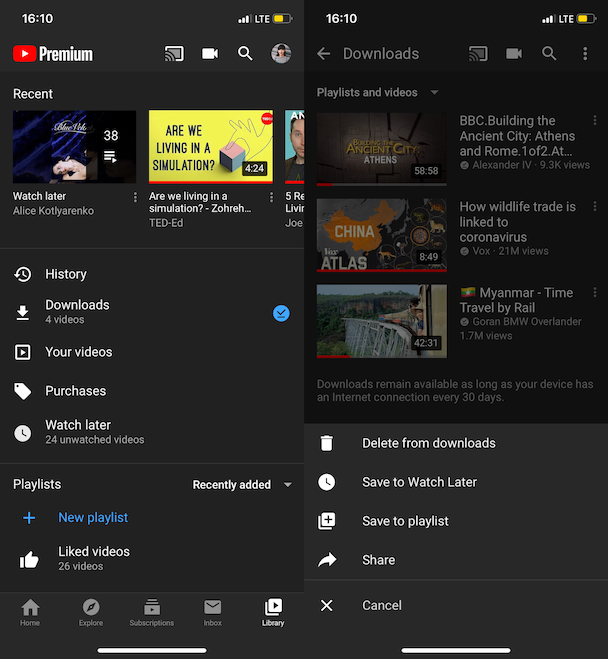
Finally, to delete offline playlists or podcasts in Spotify, do the following:
- Open Spotify.
- Go to Your Library > Music > Playlists.
- The playlists you downloaded will be marked with a green arrow. Tap on a playlist like that.
- Tap on the green arrow icon below the name of the playlist.
- When a confirmation popup appears, tap Remove.
- Repeat for podcasts, if you have any saved offline.

You should also rummage around in Podcasts, Apple Music, and other entertainment apps you’re using. Once you’ve cleaned up all the offline content you don’t need anymore, you’ll see how much iPhone memory you’ve managed to recover.
Step 6. Follow Apple's recommendations
If you use your iPhone to take photos and videos, your storage can get cluttered in no time. Apple recognizes the problem and suggests some quick actions that may help you optimize your iPhone storage. To access Apple's recommendations, go to Settings > General. Here, tap iPhone Storage and let it calculate your data. Here are some of the recommendations you may find there:
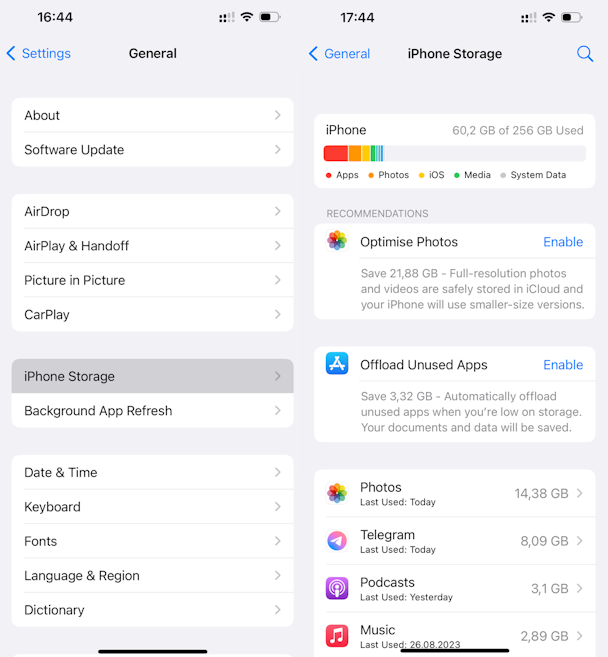
- Opimise Photos
This option lets you store full-resolution media files in iCloud while keeping smaller-size versions of your photos and videos on your iPhone. That way, you save space and can still load high-quality pictures when needed.
- Offload Unused Apps
If you don't use some apps daily but don't want to delete them entirely from your iPhone, you should enable offloading. Offloading does remove the app from your iPhone but keeps all your documents and data associated with the offloaded program. So, you can quickly download it anytime you need to use that app.
- Auto Delete Old Conversations
If you use the Messages app for texting, it may have accumulated a lot of data over the years. You can turn on auto-deletion to let your iPhone erase conversations and attachments that are more than one year old.
How to prevent iPhone storage from getting full again
Just like your closet, iPhone storage will get full again, and you will have to go through the steps above every once in a while. But there are things you can do to manage your oh-so-limited storage more wisely and not have to do that major cleanup quite as often.
Store photos and videos elsewhere
Even after you’ve cut some clutter, chances are Photos still hogs a lot of iPhone space. What to do? Transfer your photos and videos to your computer or to the cloud.
You can upload your iPhone photos to an online storage like iCloud. It’s pretty convenient, because iCloud Photos automatically syncs every photo and video you take to the cloud, so you can access your library from any device. You do have to pay for iCloud storage, though, because the free 5 GB probably won’t be enough for your whole photo library.
Here’s how to upload photos to iCloud:

- Sign in to your iCloud.com account. It’s the same as your Apple ID.
- Go to Settings on your device and select Photos.
- Turn on iCloud Photos.
Now your photos are automatically synced to iCloud, which means they'll be taking up space in iCloud, not on your iPhone.
Disable saving duplicate photos when shooting in HDR
On iPhone X and earlier models, when you take photos in HDR, your iPhone saves two shots: the original picture and the processed one. You will save a lot of iPhone storage if you disable saving these duplicates. Just do the following:
- Go to Settings and select Camera.
- Disable Keep Normal Photo.
Stop storing messages forever
By default, your iPhone stores all the messages you send and receive … forever. This is convenient if you want to read your 2-years-old conversations, but not so convenient when you run out of storage because your brother sends you fifteen memes every single day.
To stop your phone from saving messages forever, follow these steps:
- Go to Settings and tap Messages.
- Scroll down to Message History and tap Keep Messages.
- Change Forever to 30 days or 1 year.
- You’ll see a pop-up message asking if you want to delete older messages, tap Delete to proceed.

Use lower video resolution
iPhones can shoot 4K videos and while that may sound terrific, high-resolution videos may take up huge amount of space. The default 1080p HD at 60 fps may be enough for you — this setting will help optimize your storage if you're not very concerned about quality.
- Go to Settings > Camera.
- Tap Record Video.
- Select 1080p HD at 60 fps.
We hope you found our troubleshooting guide helpful in tackling that annoying “Storage Almost Full” message. Enjoy taking new photos and never have to worry about lack of iPhone storage again.





